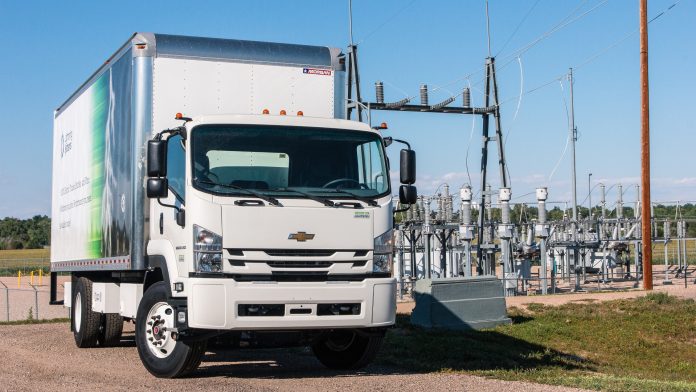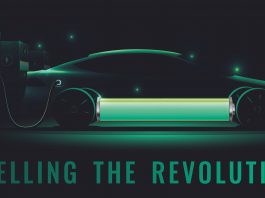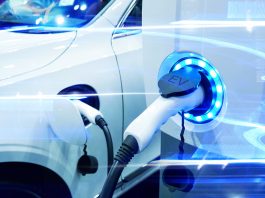Commercial vehicles are a major contributor to air pollution and greenhouse gases – electric zero-emission buses and lorries are a major piece of the solution.
The electrification of passenger cars is hardly news anymore. The list of vendors, from Nissan to Tesla, BMW, and Ford, continues to grow as the technology matures, demand rises, and costs fall. Not only do market forces encourage adoption, but governments across the globe are urging, or even mandating, the transition to zero-emission vehicles. Several major manufacturers, such as Volkswagen and Volvo, have already set a course which leaves the internal combustion engine behind.
A less-reported matter is the growing industry for zero-emission commercial vehicles, and yet, in many localities, commercial vehicles are a major source of automotive pollution. Medium- and heavy-duty lorries and buses are frequently diesel-powered which, despite decades of regulation-driven emissions improvements, are still a major source of air quality pollutants. And, of course, any vehicle that burns fossil fuels is contributing to the atmospheric carbon dioxide burden and, consequently, to climate change.
Thus, the day of the electric commercial vehicle is dawning.
Commercial electric vehicles (CEVs) are later to the market than passenger vehicles for several reasons:
- The vehicles are inherently heavier, which means larger-capacity batteries are needed to deliver useful combinations of range and payload capacity. This drives up cost;
- Volumes are lower than for passenger vehicles, so it is taking longer for manufacturers and their suppliers to realise economies of scale; and
- The commercial vehicle market is highly nuanced, with many variations on any given vehicle platform and as many use-cases. Think of dust-carts, ambulances, airport shuttles, school buses, plumbers’ vans, refrigerated food lorries, drays and council works lorries. It can be a technical challenge for a vehicle manufacturer to develop electric technology that supports this myriad of applications.
Nevertheless, the technology is now mature, and several manufacturers are poised to make CEVs in volume – with Lightning eMotors ahead of many.
Lightning eMotors
Lightning eMotors, a commercial vehicle manufacturer based in Loveland, Colorado, is addressing these markets with a range of electric vans, lorries, and buses which fulfil many of these nuanced use-cases, as well as widely deployed generic vehicles. The company employs an efficient and rapid path to market which involves taking existing commercial vehicles from large manufacturers such as Ford, GM, and Isuzu straight from the factories or dealers, and electrifying them in their facility in Colorado at the foot of the Rocky Mountains. This results in vehicles for which there is already a strong ecosystem of upfitters for cargo boxes, shelving, wheelchair lifts, cargo lifts, refrigeration units, and more. In almost all cases, the vehicles are road-ready electric vehicles before they are registered for the first time, meaning that they can qualify for government incentives for new EVs.
At this time, Lightning has more operational electric commercial vehicles on the roads than any competing North American manufacturer, which is a testament to their efficient go-to-market strategy.
The electric power train is Lightning’s core intellectual property, and is engineered with many advanced features for efficiency, drivability, and safety. A new, additional line in Lightning’s business model is producing power trains for third parties who will install them into vehicles in their own facilities. The recently-announced partnership with Ricardo in the United Kingdom is an example of this, allowing Lightning to extend its geographic reach while contributing to clean air and CO2 reductions in the UK.
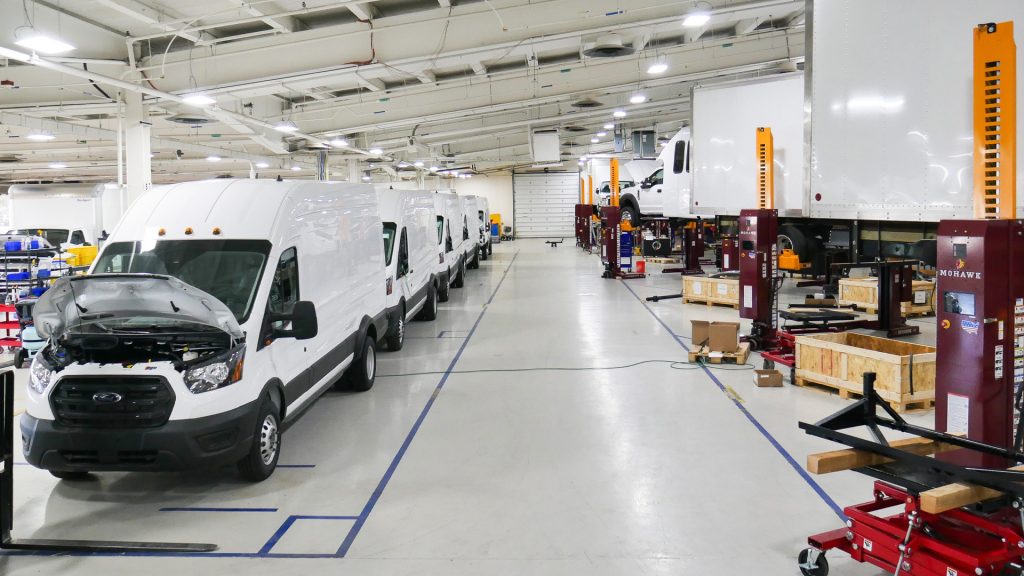
Company history
Lightning eMotors started life in Loveland as Lightning Hybrids, focused on developing a small sports sedan car that employed a hydro-pneumatic regenerative braking hybrid system to improve efficiency and reduce emissions. It soon became apparent that an easier path to market was to develop this hybrid system for the commercial fleet market as a retrofit product, so in 2009 Lightning turned its attention to fleet customers.
In 2017, the company relocated to a building on the former Hewlett-Packard campus in Loveland and was renamed to Lightning Systems. However, it was becoming clear that market adoption of hydraulic hybrids was slow, so Lightning transitioned to developing and manufacturing battery-electric commercial vehicles.
Lightning transitioned from a private to a public company in May 2021 through a merger with GigCapital3 and is now listed on the New York Stock Exchange under the symbol ZEV. The resulting infusion of cash is mainly allocated to increasing production capacity, as the company expects output to scale dramatically over the coming few years. The rebranding to Lightning eMotors occurred in the run-up to the merger.
Lightning now leases most of the floor space in two of the large buildings on the campus, for a total of 230,000 square feet (21,400 square meters). Hiring has proceeded rapidly over the past year, with currently around 200 permanent staff and a dozen contract workers.
Range and efficiency
With the current state of lithium-ion battery technology, which is by far the most commonly-used type for automotive applications, it is challenging to deliver commercial vehicles with the same useful ranges as you might see with internal combustion engine vehicles. A typical van or bus from Lightning may have a range of 125 miles (200 km). While longer ranges are coming, it is currently unfeasible to offer, say, 300 miles (480 km) because the weight and volume of the battery packs would leave little capacity for cargo or passengers, not to mention the high cost of a vehicle so equipped.
However, it may surprise you to learn that there are many applications which do not require long ranges. Examples include last-mile package delivery (Amazon, DHL, etc.), airport and hotel shuttles, hospital and university campus vehicles, council works vehicles and others. One of Lightning’s customers, DHL, is operating vehicles in New York City which see less than 50 miles of use per day. This is to say that, while electric commercial vehicles are not yet suitable for all applications, the addressable market is very large, and adoption would make a strong positive impact on urban air quality and CO2 emissions.
However, while electric ranges do not match petrol or diesel vehicles, there are some important considerations in favour of electrification regarding range and efficiency:
- Electric motors are inherently efficient. The energy losses in an automotive electric traction motor are about 15%, or, in other words, 85% of the energy purchased goes into driving the vehicle down the road (and supporting heating, air conditioning, etc.). In contrast, diesel and petrol vehicles have efficiencies of less than 30%. More than 70% of the energy in the tank travels through the exhaust pipe as waste heat. Using a figure called ‘MPG equivalent’, which is a way of comparing energy use between petrol and electric vehicles, Lightning quotes a figure of 79 MPGe (UK gallon) for its electric Transit 350HD van. In petrol form, the same vehicle typically delivers 16 MPG (UK gallon). This means, irrespective of how one’s electricity is generated, a unit of electric energy takes the vehicle much further along the road than the same unit of fossil fuel energy;
- Sophisticated engineering maximises the range. One way to improve the overall efficiency of an electric vehicle is to employ regenerative braking, which is where the electric motor works as a generator when the vehicle is slowing down. In fact, it slows the vehicle down, acting as brakes. However, unlike brakes, which turn the vehicle’s motion energy into heat (which is lost), regenerative braking turns it into electric charge which is returned to the batteries (and is not lost). While not always a major component of the vehicle’s energy budget, Lightning has focused on optimising regenerative braking’s effectiveness, delivering the best efficiencies among its peers. As a beneficial side-effect, regenerative braking reduces wear on the vehicle’s brakes, which contributes to lower maintenance costs.
Two categories of emissions
Automotive pollutants fall into two main categories:
Air quality pollutants: These degrade the air quality in a region. Poor air quality impacts human health and can lead to hospitalisations and premature deaths. Air quality pollutants include oxides of nitrogen (NOX), carbon monoxide (CO), volatile organic compounds (VOCs) and particulate matter (PM), which includes diesel soot, brake dust and tyre dust.
Greenhouse gases: These capture heat in the atmosphere and are contributing to manmade global warming, and, as a result, to climate change. The primary automotive gas in this category is carbon dioxide (CO2), which is the main product of all fossil fuel combustion.
A battery-electric vehicle emits no CO2 because there is no fossil fuel combustion. Likewise, there are no emissions of NOX, CO, or VOCs. The emissions of PM are also reduced: there is no diesel soot and brake dust is reduced due to the use of regenerative braking.
Additionally, noise is widely regarded as a form of pollution. Electric vehicles are much quieter than, for example, diesel vehicles, especially at urban speeds.
Zero emissions or ‘displaced emissions’?
It is certainly fair to describe battery-electric vehicles as zero-emission vehicles because no pollutants or greenhouse gases are emitted while on the road. (Strictly speaking, the vehicles emit tyre dust and brake dust, which are categorised as particulate matter; but, as mentioned above, brake dust emissions are much reduced.) However, it is also important to consider emissions associated with generating the electricity that the vehicles are powered with.
If all things were equal, one might expect that a power station’s CO2 emissions would match the emissions of a petrol or diesel vehicle for the energy needed to drive, say, 100 miles in an electric vehicle. However, as discussed above, electric vehicles are much more efficient than internal combustion-engine vehicles, requiring much less energy. In addition, most power stations, such as natural gas ones, are more efficient than petrol engines and therefore emit less CO2 per unit of energy generated as electricity. There is also the growing capacity of renewable, non-CO2-emitting energy generation, such as wind, hydroelectric and solar, which improves the situation further.
As an example, the team at Lightning eMotors ran some calculations comparing Ford’s stock petrol-powered Transit 350HD van with Lightning’s electric van. Looking at California (one of the primary markets for commercial electric vehicles), the numbers showed that driving an electric van for 100 miles produces 24lbs (10.8kg) of CO2 from the power grid, whereas driving the petrol vehicle for 100 miles would produce 150lbs (68kg). Yes, the emissions are indeed displaced; but they are also significantly reduced.
Charging as a Service
As with conventional buses and lorries, electric commercial vehicles require more fuel than passenger vehicles. Their larger battery capacities mean that thought must be given to charging infrastructure, especially for fleets with many vehicles.
A typical AC domestic vehicle charger might deliver 9.6kW of power, which would charge a passenger EV in four to eight hours. Using the same charger to power, say, an 18-tonne lorry would take over 20 hours, which is not useful for operational duties. For larger vehicles, DC fast chargers are required. These typically deliver power anywhere from 25kW to 150kW or even higher. A 50kW station would charge the same lorry in about four hours.
It is important to consider, however, that installing a DC fast charger is usually a bigger project than installing a low-power AC charger. The higher output requires greater electrical provision from the grid, which in turn may require new connections from the electric utility company to the operator’s site. Multiply this by the need to charge multiple vehicles, and it can turn into a major project.
Lightning eMotors’ charging division, Lightning Energy, offers project management services for the design and deployment of charging infrastructure, to make it easy for the fleet operator to adopt electric vehicles. By adding ongoing management and support of charging stations, this becomes an offering known as ‘Charging as a Service’, where the fleet operator’s deployment and ongoing charging needs are covered for a monthly fee.
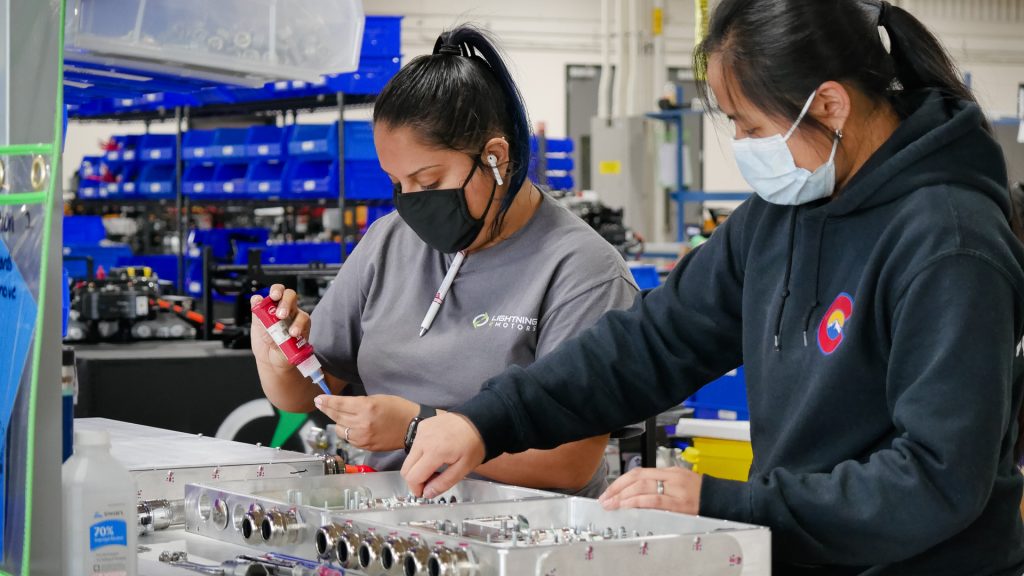
Telematics and analytics
Every Lightning vehicle is equipped with a 4G cellular modem which is used to upload almost-real-time data to the company’s servers. This data includes all the operational parameters of the electric system, including temperatures, battery voltages, coolant pressures, accelerator pedal position, vehicle speed, GPS location and more. This wealth of data has three main audiences:
- Our customer service team monitors the health of every vehicle in real time, and can alert the customer when a vehicle needs maintenance or repair, as well as scheduling service personnel to carry out this work;
- Fleet managers receive summarised reports for their electric fleets, which show vehicle efficiencies, driver behaviours and more. In addition, a real-time portal is provided which allows a fleet operator to see the state of charge of all their vehicles, for example; and
- Finally, Lightning’s engineering team uses this data as a valuable record of how the vehicles operate in real-world conditions, informing on-going improvements to the hardware and software. This results in improved efficiencies, reliability and functionality.
The future
There are many trends favouring the growth of the electric vehicle market, both for passenger and commercial vehicles. Legislation, stakeholder pressure, societal opinion, and a realisation that climate change is real are driving investment into development and deployment of zero-emission transportation. Examples of legislation are London’s Ultra Low Emission Zone and California’s mandate that all city buses must be zero-emission by 2029. Investors are becoming wary of big oil, or are responding to public opinion, as exemplified by Cambridge University’s plan to divest fossil fuel investments by 2030.
Combined with the increasing scale of production for electric vehicles and their constituent components, driving costs down, as well as the increasing availability of charging infrastructure, it is clear that the future is electric.
Please note, this article will also appear in the eighth edition of our quarterly publication.

